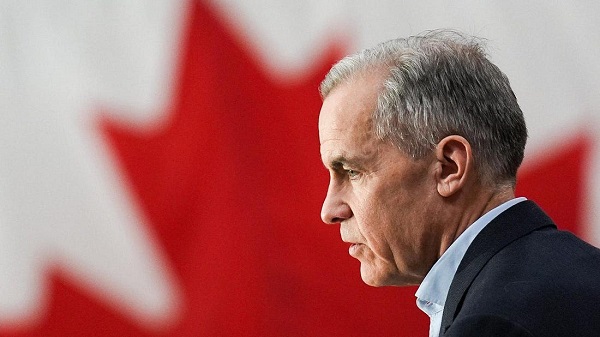Uncategorized
White House shifts shutdown strategy, tries to bypass Pelosi

WASHINGTON — Shifting strategy, the White House invited rank-and-file House Democrats to lunch Tuesday with President Donald Trump, bypassing Speaker Nancy Pelosi and her leadership team in an effort to get centrist and freshman lawmakers on board with funding Trump’s long-promised U.S.-Mexico border wall.
Pelosi approved of lawmakers attending the meeting, telling her team that the group can see what she and others have been dealing with in trying to negotiate with Trump to end the partial government shutdown, now in its 25th day with no resolution in sight.
Pelosi predicted that after meeting with Trump the lawmakers will want to make a “citizen’s arrest,” according to the aide, who wasn’t authorized to publicly discuss the meeting and spoke on condition of anonymity.
Lawmakers invited to the White House include centrist Democrats from districts where Trump is popular, including freshmen.
Rep. Jim Cooper, D-Tenn., said he attended a meeting of fellow centrist Democrats on Monday night and that a handful of members, most of whom represent districts Trump carried in 2016, were invited.
The White House has not released a guest list.
Rep. Jim Himes of Connecticut, another centrist Democrat, said the White House is “grasping at straws.”
“The majority of Americans understand exactly what is happening here,” he said. “The president could open the government tomorrow and he refuses to. We’re very conscious of the fact that this is a bully and when you allow him to succeed by holding the government hostage you can expect to see that play run again.”
Senate Majority Leader Mitch McConnell said on the Senate floor that it’s up to Democrats to get the country off the “political carousel” of the shutdown fight. The Kentucky Republican said Democrats have turned Trump’s wall into “something evil” and have engaged in “acrobatic contortions” to avoid dealing with the security and humanitarian crisis at the southern border.
With the government shutdown now in its fourth week, negations between the White House and Congress are at a standstill. Trump has demanded $5.7 billion for the border wall; Democrats are refusing but are offering money for fencing and other border security measures.
On Monday, Trump rejected a short-term legislative fix and dug in for more combat, declaring he would “never ever back down.” The president also edged further away from the idea of trying to declare a national emergency to circumvent Congress.
“I’m not looking to call a national emergency,” Trump said Monday. “This is so simple we shouldn’t have to.”
Trump’s rejection of the short-term option proposed by Republican Sen. Lindsey Graham removed one path forward, and little else was in sight. Congressional Republicans were watching Trump for a signal for how to move next, and Democrats have not budged from their refusal to fund the wall and their demand that he reopen government before border talks resume.
In addition to the White House outreach to centrist House Democrats, about a dozen senators from both parties met Monday to discuss ways out of the shutdown gridlock. Participants included Graham and Sens. Susan Collins, R-Maine, Joe Manchin, D-W.Va., and Tim Kaine, D-Va.
Sen. John Cornyn, R-Texas, McConnell was aware of the group’s effort but added, “I wouldn’t go so far as to say he’s blessed it.” The odds of the group producing a solution without Trump’s approval seemed slim.
Meanwhile, the effects of the 25-day partial government closure were intensifying around the country.
Some 800,000 federal workers missed paychecks Friday, deepening anxieties about mortgage payments and unpaid bills, and about half of them were off the job, cutting off some services.
Trump spent the weekend in the White House reaching out to aides and lawmakers and tweeting aggressively about Democratic foes as he tried to make the case that the wall was needed on both security and humanitarian grounds. He stressed that argument repeatedly during a speech at a farming convention in New Orleans on Monday, insisting there was “no substitute” for a wall or a barrier along the southern border.
Trump has continued to insist he has the power to sign an emergency declaration to deal with what he says is a crisis of drug smuggling and trafficking of women and children at the border. But he now appears to be in no rush to make such a declaration.
Instead, he is focused on pushing Democrats to return to the negotiating table — though he walked out of the most recent talks last week.
White House officials cautioned that an emergency order remains on the table. Many inside and outside the White House hold that it may be the best option to end the budget standoff, reopening the government while allowing Trump to tell his base supporters he didn’t cave on the wall.
However, some GOP lawmakers — as well as White House aides — have
___
For AP’s complete coverage of the U.S. government shutdown: https://apnews.com/GovernmentShutdown
___
Associated Press writers Darlene Superville, Matthew Daly, Jonathan Lemire, Alan Fram and Lisa Mascaro contributed to this report.
Catherine Lucey And Jill Colvin, The Associated Press
Uncategorized
Trump Admin Establishing Council To Make Buildings Beautiful Again


From the Daily Caller News Foundation
By Jason Hopkins
The Trump administration is creating a first-of-its-kind task force aimed at ushering in a new “Golden Age” of beautiful infrastructure across the U.S.
The Department of Transportation (DOT) will announce the establishment of the Beautifying Transportation Infrastructure Council (BTIC) on Thursday, the Daily Caller News Foundation exclusively learned. The BTIC seeks to advise Transportation Secretary Sean Duffy on design and policy ideas for key infrastructure projects, including highways, bridges and transit hubs.
“What happened to our country’s proud tradition of building great, big, beautiful things?” Duffy said in a statement shared with the DCNF. “It’s time the design for America’s latest infrastructure projects reflects our nation’s strength, pride, and promise.”
“We’re engaging the best and brightest minds in architectural design and engineering to make beautiful structures that move you and bring about a new Golden Age of Transportation,” Duffy continued.
Mini scoop – here is the DOT’s rollout of its Beautifying Transportation Infrastructure Council, which will be tasked with making our buildings beautiful again. pic.twitter.com/
9iV2xSxdJM — Jason Hopkins (@jasonhopkinsdc) October 23, 2025
The DOT is encouraging nominations of the country’s best architects, urban planners, artists and others to serve on the council, according to the department. While ensuring that efficiency and safety remain a top priority, the BTIC will provide guidance on projects that “enhance” public areas and develop aesthetic performance metrics.
The new council aligns with an executive order signed by President Donald Trump in August 2025 regarding infrastructure. The “Making Federal Architecture Beautiful Again” order calls for federal public buildings in the country to “respect regional architectural heritage” and aims to prevent federal construction projects from using modernist and brutalist architecture styles, instead returning to a classical style.
“The Founders, in line with great societies before them, attached great importance to Federal civic architecture,” Trump’s order stated. “They wanted America’s public buildings to inspire the American people and encourage civic virtue.”
“President George Washington and Secretary of State Thomas Jefferson consciously modeled the most important buildings in Washington, D.C., on the classical architecture of ancient Athens and Rome,” the order continued. “Because of their proven ability to meet these requirements, classical and traditional architecture are preferred modes of architectural design.”
The DOT invested millions in major infrastructure projects since Trump’s return to the White House. Duffy announced in August a $43 million transformation initiative of the New York Penn Station in New York City and in September unveiledmajor progress in the rehabilitation and modernization of Washington Union Station in Washington, D.C.
The BTIC will comprise up to 11 members who will serve two-year terms, with the chance to be reappointed, according to the DOT. The task force will meet biannually. The deadline for nominations will end Nov. 21.
Uncategorized
New report warns WHO health rules erode Canada’s democracy and Charter rights

The Justice Centre for Constitutional Freedoms has released a new report titled Canada’s Surrender of Sovereignty: New WHO health regulations undermine Canadian democracy and Charter freedoms. Authored by Nigel Hannaford, a veteran journalist and researcher, the report warns that Canada’s acceptance of the World Health Organization’s (WHO) revised International Health Regulations (IHR) represents a serious erosion of national independence and democratic accountability.
The IHR amendments, which took effect on September 19, 2025, authorize the WHO Director-General to declare global “health emergencies” that could require Canada to follow directives from bureaucrats in Geneva, bypassing the House of Commons and the will of Canadian voters.
The WHO regards these regulations as “binding,” despite having no ability or legal authority to impose such regulations. Even so, Canada is opting to accept the regulations as binding.
By accepting the WHO’s revised IHR, the report explains, Canada has relinquished its own control over future health crises and instead has agreed to let the WHO determine when a “pandemic emergency” exists and what Canada must do to respond to it, after which Canada must report back to the WHO.
In fact, under these International Health Regulations, the WHO could demand countries like Canada impose stringent freedom-violating health policies, such as lockdowns, vaccine mandates, or travel restrictions without debate, evidence review, or public accountability, the report explains.
Once the WHO declares a “Pandemic Emergency,” member states are obligated to implement such emergency measures “without delay” for a minimum of three months.
Importantly, following these WHO directives would undermine government accountability as politicians may hide behind international “commitments” to justify their actions as “simply following international rules,” the report warns.
Canada should instead withdraw from the revised IHR, following the example of countries like Germany, Austria, Italy, Czech Republic, and the United States. The report recommends continued international cooperation without surrendering control over domestic health policies.
Constitutional lawyer Allison Pejovic said, “[b]y treating WHO edicts as binding, the federal government has effectively placed Canadian sovereignty on loan to an unelected international body.”
“Such directives, if enforced, would likely violate Canadians’ Charter rights and freedoms,” she added.
Mr. Hannaford agreed, saying, “Canada’s health policies must be made in Canada. No free and democratic nation should outsource its emergency powers to unelected bureaucrats in Geneva.”
The Justice Centre urges Canadians to contact their Members of Parliament and demand they support withdrawing from the revised IHR to restore Canadian sovereignty and reject blind compliance with WHO directives.
-

 Alberta2 days ago
Alberta2 days agoAlberta government’s plan will improve access to MRIs and CT scans
-

 Business2 days ago
Business2 days agoTrump’s Tariffs Have Not Caused Economy To Collapse
-

 Daily Caller2 days ago
Daily Caller2 days agoTrump Reportedly Planning Ground Troops, Drone Strikes On Cartels In Mexico
-

 Economy1 day ago
Economy1 day agoWelcome to the Energy Humanist Club! Bill Gates breaks the moral monopoly against fossil fuels
-

 Brownstone Institute2 days ago
Brownstone Institute2 days agoBizarre Decisions about Nicotine Pouches Lead to the Wrong Products on Shelves
-

 International2 days ago
International2 days agoHours after Trump’s warning, Nigerian Christians massacred by Islamist gunmen
-

 Agriculture1 day ago
Agriculture1 day agoDanish Cows Collapsing Under Mandatory Methane-Reducing Additive
-

 Business2 days ago
Business2 days agoCarney government’s first budget should signal end to crippling ‘climate’ policies










